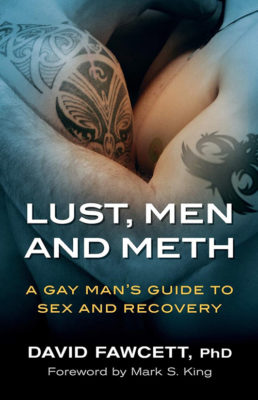 Dr. David Fawcett
Dr. David Fawcett
Addictions release such high amounts of dopamine that anyone who establishes a regular pattern of use risks switching to other drugs and/or behaviors to replace the dopamine. Once any behavior or drug has become problematic, it is important for the user to undergo an honest self-examination to determine the factors driving the behavior and to correct those factors. Recovery programs, therapy, and support groups are excellent avenues by which to pursue this work.
Many people have used a substance, behavior, or combination of both that has brought them to their knees. Despite this, they can retain blind spots to the potential risks of other drugs and behaviors, especially drugs and behaviors that were not directly involved in their hitting bottom. The mindset of an addict may mistakenly attribute a benign quality to the potential risk of those drugs and behaviors. A typical example might be a meth user who clearly understands this drug totally took over their life and they need to abstain from it. Very often, especially in early recovery, this individual might decide that alcohol was never really a problem. their addictive self-talk may ask what would be so bad, for example, about occasionally having a beer or two with friends.
The answer, of course, is that alcohol disinhibits one’s resolve not to use drugs or act out sexually. I’ve had more than one client in meth recovery who tempted fate with a beer with friends. In most cases, they found that the idea of actually using meth suddenly didn’t seem so terrible and they went directly from the barstool to the drug.
Unfortunately, because of the way that treatment and recovery fellowships are organized, we tend to artificially focus our recovery efforts on specific drugs and behaviors rather than understanding that any compulsive behavior is an expression of an underlying addictive pattern. In the case of an alcoholic, the beverage is a symptom of addiction, but simply treating alcohol misuse without recognizing the potential risk of other drugs or behaviors is a dangerous oversight.
In working with thousands of clients over the years, I have witnessed the impulse in recovery to switch addictive behaviors because the underlying drivers for the addiction – trauma, situations, negative beliefs about oneself – have not been addressed. If alcohol has been my (maladaptive) coping mechanism and I get abstinent without really doing work on myself, the addictive impulse will work its way out with another drug or behavior.
I remember looking around my home AA group on my first sobriety anniversary and noting that several of my friends who entered recovery at the same time I did had clearly transferred addictions. One had gained about fifty pounds, another had several thousand dollars of new credit card debt, and another discovered a new interest in gambling. I call this the “Whac-A-Mole” syndrome. If we just treat the primary drug or behavior without addressing the underlying drivers, that addict is at great risk for relapse or new forms of addiction with an ever-expanding array of addictive drugs and behaviors.
* * * * * * * * * *
If you or someone you care about is struggling with compulsive sexual behavior, help is available. For sex addicts, Seeking Integrity offers a low-cost online workgroup series. Click HERE for information. We also offer a low-cost online workgroup to help addicts learn about healthy intimacy and sexuality. Click HERE for information.
